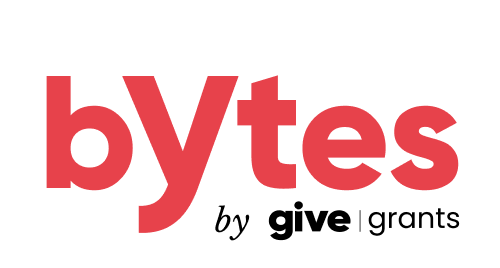

“Bytes: Practical Research for CSR” is a series by Give Grants designed to decode and demystify the extensive social impact research and data available in the form of clear and actionable insights for CSR practitioners in India.”
Between 2015-16 and 2019-21, India achieved a significant reduction in poverty, with the rate falling from 25% to 15%, lifting 13.5 crore people out of poverty. This marked the first time India measured progress using a multidimensional poverty index, which considers more than just income. (ref)
SDG 1, “End poverty in all its forms everywhere,” emphasizes that poverty is multidimensional, shaped by factors such as health, education, and living standards. Amartya Sen’s work on inequality and capabilities (Development as Freedom, 1999) laid the foundation for understanding poverty in this broader sense, and in 2011, the Oxford Poverty and Human Development Initiative (OPHI) formalized the Multidimensional Poverty Index (MPI).(ref)
In 2021, India, under Niti Aayog’s leadership and with technical support from UNDP and OPHI, launched its National MPI. This initiative, part of the Global Indices for Reforms and Growth (GIRG) mandate, was designed to monitor and improve India’s global ranking on 29 global indices.
The Multidimensional Poverty Index (MPI) is a tool used to measure poverty through various factors, including health, education, and living standards. It provides a comprehensive understanding of poverty and allows for targeted interventions.
3 primary categories, health, education, and standard of living with a total of 12 indicators.

The MPI identifies poverty using a dual-cutoff method. First, each household is assessed for deprivation in each of the 12 indicators. These are aggregated into a deprivation score. If the deprivation score is above 33%, the household is multidimensionally poor.
India’s National MPI used baseline data from the National Family Health Survey 2015-16 (NFHS-4). This ongoing exercise provides policymakers with insights into the effectiveness of poverty alleviation efforts and identifies district-level challenges and trends for more targeted interventions.
Multidimensional Poverty Indicators for India
A household is classified as deprived if it fulfills the criteria against the specific indicators as follows:
Health
- Nutrition – A household is considered deprived in nutrition if any child (0–59 months), woman (15–49 years), or man (15–54 years) in the household is undernourished.
This indicator contributes to nearly 1/3 of multidimensional poverty in India. If one member is undernourished, the entire household is classified as deprived, as factors affecting one member’s nutrition are likely to impact others in the household, directly or indirectly. - Child and Adolescent Mortality – A household is considered deprived if any child or adolescent under 18 has died in the 5 years preceding the survey.
Child and adolescent mortality reflects various deprivations, including poor access to healthcare, prevalence of infectious diseases, malnutrition, anaemia, and unsafe living conditions. It also worsens deprivation by removing a potential future earner or caregiver. - Maternal health – A household is considered deprived if any woman who gave birth in the 5 years preceding the survey did not receive at least four antenatal care (ANC) visits for her most recent birth or did not have assistance from trained medical personnel during childbirth.
Education
- Years of schooling –A household is considered deprived if no member aged 10 years or older has completed at least 6 years of schooling. If at least one member has completed 6 years of schooling, the household is classified as non-deprived, even if others haven’t attended school. The assumption is that one educated member can potentially improve the household’s future economic prospects and social standing.
- School attendance– A household is considered deprived if any school-aged child is not attending school up to the age at which he/she would complete class 8. A child’s absence from school not only reflects the current deprivations the household faces but also signals potential future disadvantages due to a lack of education, which can limit opportunities and perpetuate poverty.
Standard of Living
- Cooking Fuel – A household is considered deprived if its primary source of cooking fuel is dung, crops, shrubs, wood, charcoal, or coal. Having access to electricity, LPG, natural gas, or biogas is not sufficient to classify a household as non-deprived; the household must actively use these improved and safer fuels as their main source of cooking to avoid being considered deprived.
- Sanitation – The household has unimproved or no sanitation facility or it is improved but shared with other households. The expectation is to have access to an improved and independent sanitation facility.
- Drinking Water – A household is considered deprived if it lacks access to improved drinking water or if safe water is more than a 30-minute round trip away. Improved sources include piped water, public taps, standpipes, tube wells, boreholes, protected wells and springs, rainwater, and community reverse osmosis (RO) plants. At least one of these must be accessible within a 30-minute round trip to avoid being classified as deprived.
- Electricity – A household is deprived if it has no electricity. Electricity is treated as an essential service and forms a critical input for availing other services/information.
- Housing – A household is deprived if it has inadequate housing: the floor is made of natural materials, or the roof or walls are made of rudimentary materials.
- Assets – The household is deprived if it does not own more than one of these assets: radio, TV, telephone, computer, animal cart, bicycle, motorbike, or refrigerator; and does not own a car or truck.
- Bank Account – No household member has a bank account or a post office account. Beyond access to institutional credit and savings instruments, financial inclusion—specifically having a bank account—is crucial for households to benefit from government programs and entitlements. This inclusion enables direct benefit transfers, which play a key role in reducing poverty, increasing access to education, and supporting livelihoods.
[Infographic] Multidimensional Poverty Index: Beyond Income-Based Poverty Measures



